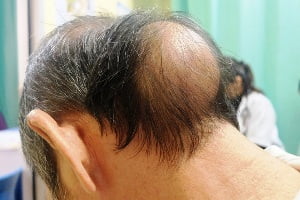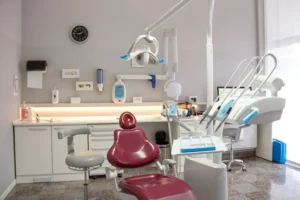3 Empathetic Ways Doctors Can Help Patients With Chronic Disease
- Updated on: Jan 15, 2025
- 3 min Read
- Published on Jan 8, 2025

Living with chronic disease can be a disheartening, frustrating experience. Lifestyle-related factors have made younger people susceptible to these conditions, which means they suffer longer. Worse, many health professionals feel helpless in administering adequate care to such patients. Some chronic conditions like hypertension and arthritis don’t have a cure.

A 2023 Frontiers in Public Health study had distressing insights on this situation. Over 142 million may suffer from at least one chronic illness by 2050. Around 15 million may have multimorbidities. Hypertension and diabetes are the most cited concerns, but lung diseases and musculoskeletal pain also plague hundreds of people.
It doesn’t help that the US is infamous for agonizingly long wait times for doctor appointments. McKinsey finds that physician shortage is unlikely to abate soon, with many clinics not optimizing their doctors’ time for patient care. With more patients struggling to obtain a better quality of life, interventions are necessary to build more supportive healthcare teams.
Here are three practical and actionable ways doctors can empathetically deal with those suffering from long-term conditions.
#1 Maintain Care Continuity Through Patient Monitoring
Most chronic conditions warrant continued long-term care. For example, Type-2 diabetes requires periodic blood sugar checks to ensure blood glucose levels remain within recommended limits. Accessing such consistent care can be a problem for much of the world’s population.
A 2024 CDC report found that people with lower car ownership rates and those far from hospitals, pharmacies, and health centers are likelier to have chronic conditions. The situation is worse for those with socioeconomic disadvantages, like a lower income or educational level.
In these circumstances, remote patient monitoring software can bridge some barriers to healthcare. It uses connected devices that monitor patient health data and lets healthcare providers track this information over time. Suppose a patient suffers from hypertension. They can record their blood pressure on the linked device, which goes to the healthcare team.
Based on this data, physicians can check in with their patients once a month or as required. Telemedicine video conferencing lets doctors build stronger relationships with their patients and give personalized attention. CoachCare finds that such sustained communication can enhance cost and time management, making your clinic an innovation leader.
#2 Learn About and Acknowledge Conditions Like Long COVID
The COVID-19 pandemic has left the world with more chronic illnesses than before, some of which medical professionals may know little about. Long COVID is notorious for causing fatigue, mental fog, and neurological issues. However, few doctors recognize it as a chronic condition or have training to deal with it.
Harvard Business Review notes that long COVID has severe consequences on the workforce. Around 30% of people dealing with it have reduced their work hours, while 27% took medical leave. The difficulty of getting an official diagnosis, combined with a lack of organizational support, causes anguish to patients, many of whom are in their 30s and 40s.
Empathetic doctors must upskill to understand new chronic conditions and administer tailored solutions. For example, some people with long COVID have seen benefits from pacing their daily activities. Doctors can help them develop better lifestyle and exercise habits to manage this condition. Expert guidance and dietary advice can help people function optimally according to their energy levels.
#3 Empower Patients by Sharing Actions for Symptom Management
Many chronic illnesses don’t have concrete cures, forcing patients to suffer their impact for years. For example, some gastrointestinal disorders, like IBS or Irritable Bowel Syndrome, are chronic. Persistent problems with bowel movements can disrupt one’s quality of life. Coaching people on symptom self-management is a doctor’s core responsibility as medical advances strive for clinical solutions.
In the case of IBS, medical professionals can coach patients on balanced eating habits that include probiotics and fresh ingredients. Many chronic conditions see some improvement with regular exercise. Doctors must also work on their patients’ mental health by making them feel heard, cared for, and in control. Chronic diseases can seriously jeopardize well-being, making such interventions indispensable.
The healthcare sector also needs patient support to benefit from advanced telemedicine technologies. Remote patient monitoring can work optimally if the patients understand the benefits of recording and tracking their health information. Doctors can discuss the measurable advantages of such technologies during in-person visits. Selecting a program that is easy to integrate with the clinic will not involve a long-drawn learning curve.
Chronic conditions take the delight out of everyday life, making simple tasks cumbersome and limiting one’s enjoyment of recreational pursuits. Fortunately, advancing medical technology and training have made help more accessible for chronic disease patients.
Contemporary healthcare research is actively working on improving physical and mental health for those with chronic illnesses. In the meantime, doctors who show empathy toward their patients can encourage them to feel stronger every passing day.












